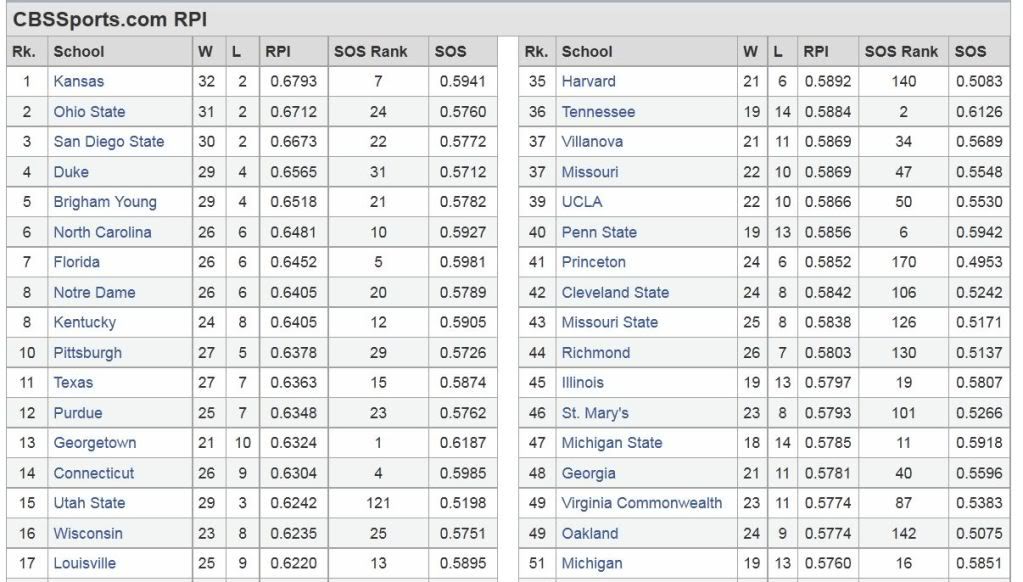NCAA Women's Basketball Rankings: Your Ultimate Guide To The Best Teams
Hey there, basketball enthusiasts! If you're diving into the world of NCAA Women's Basketball Rankings, you're in for a treat. This isn't just about numbers and standings; it's about passion, skill, and the relentless drive to be the best. Whether you're a die-hard fan or just starting to explore the game, this article has everything you need to know about the rankings and what they mean for the teams. Let's get right into it, shall we?
College basketball is more than just a sport; it's a cultural phenomenon that brings together fans from all walks of life. The NCAA Women's Basketball Rankings are a crucial part of this ecosystem, serving as a barometer for team performance and a predictor of future success. These rankings aren't just numbers on a page—they're a reflection of the hard work, dedication, and talent that these athletes bring to the court every single day.
As we dive deeper into this topic, you'll discover how these rankings are determined, the impact they have on teams, and why they matter so much to fans and players alike. So grab your favorite snack, settle in, and let's explore the fascinating world of NCAA Women's Basketball Rankings together.
Read also:Kent Mccord From Adam12 Icon To Environmental Activist
Understanding NCAA Women's Basketball Rankings
First things first, let's break down what the NCAA Women's Basketball Rankings actually mean. These rankings are essentially a snapshot of how teams are performing at any given point in the season. They're updated regularly to reflect recent games, injuries, and other factors that can influence a team's standing. It's like a leaderboard, but instead of points, it's all about wins, losses, and overall performance.
But here's the kicker: these rankings aren't just for show. They play a huge role in determining which teams make it to the NCAA Tournament, aka March Madness. Teams that rank higher have a better chance of securing favorable matchups and hosting games, which can be a massive advantage in the postseason. So, yeah, these rankings are a big deal.
How Are Rankings Determined?
Alright, so how exactly do these rankings come together? It's not as simple as counting wins and losses. The NCAA uses a combination of factors, including:
- Win-Loss Record: A no-brainer, right? Teams with more wins naturally rank higher.
- Strength of Schedule: Playing tougher opponents can boost a team's ranking, even if they lose some games.
- Quality Wins: Defeating highly-ranked teams is a big deal and can significantly improve a team's standing.
- RPI (Ratings Percentage Index): This metric considers a team's winning percentage, their opponents' winning percentage, and their opponents' opponents' winning percentage. Yeah, it's that complex.
- Net Efficiency: This measures how effectively a team scores and defends compared to their opponents.
It's a lot to take in, but trust me, it all adds up to create a pretty accurate picture of where each team stands in the grand scheme of things.
Why Do Rankings Matter?
Now that we know how rankings are determined, let's talk about why they matter. For starters, they provide fans with a clear understanding of which teams are performing well and which ones need to step up their game. But beyond that, rankings have real-world implications for the teams themselves.
Higher rankings can lead to better recruiting prospects, increased media exposure, and more financial support from universities. They can also influence player morale and confidence, which can have a ripple effect on performance both on and off the court. In short, these rankings aren't just numbers—they're a vital part of the college basketball landscape.
Read also:Best Ssh Remote Iot Device Raspberry Pi Free Unlocking The Power Of Pi
The Impact on Players and Coaches
For players and coaches, rankings can be a double-edged sword. On one hand, they provide motivation to improve and climb the ladder. On the other hand, they can create pressure and stress, especially when expectations are high. Coaches often use rankings as a tool to push their teams to perform better, while players may use them as a benchmark for personal growth and development.
But here's the thing: rankings are just one piece of the puzzle. At the end of the day, it's all about how the team performs when it matters most—in the games themselves.
Top Teams in NCAA Women's Basketball Rankings
Alright, let's get to the good stuff. Who are the top teams in the NCAA Women's Basketball Rankings right now? While rankings can fluctuate throughout the season, there are a few teams that consistently dominate the leaderboard. Here are some of the heavy hitters:
- University of Connecticut (UConn): Known for their powerhouse program, UConn has been a perennial contender in the rankings. Their combination of talent, coaching, and tradition makes them a force to be reckoned with.
- University of South Carolina: The Gamecocks have been on a tear in recent years, thanks to their strong defense and clutch performances in key games.
- Stanford University: Stanford's women's basketball team is a model of consistency, consistently ranking among the top teams in the nation.
- Baylor University: With a roster full of talented players and a coach who knows how to get the best out of them, Baylor is always a contender.
Of course, the list doesn't end there. Teams like Louisville, Oregon, and Texas are also making waves in the rankings, proving that the competition is fiercer than ever.
Rising Stars in the Rankings
While established programs like UConn and South Carolina dominate the headlines, there are plenty of up-and-coming teams making noise in the rankings. These teams may not have the same level of tradition or resources, but they're proving that hard work and determination can pay off. Keep an eye on teams like Mississippi State, Maryland, and NC State, who are quickly climbing the ladder and showing no signs of slowing down.
History of NCAA Women's Basketball Rankings
To truly understand the importance of rankings, we need to look back at their history. The NCAA Women's Basketball Rankings have been around for decades, evolving alongside the sport itself. In the early days, rankings were more informal and based largely on subjective opinions from coaches and media members. Over time, however, they've become more data-driven and sophisticated, incorporating advanced metrics and analytics to paint a more accurate picture of team performance.
This evolution reflects the growing professionalism and competitiveness of women's college basketball. What was once a niche sport has become a major player in the college athletics landscape, with rankings playing a crucial role in shaping its future.
Key Milestones in Rankings History
Here are a few key milestones in the history of NCAA Women's Basketball Rankings:
- 1975: The first official NCAA Women's Basketball Tournament is held, marking the beginning of organized rankings.
- 1982: The AP Poll begins including women's basketball, providing a more standardized ranking system.
- 2000s: Advanced metrics like RPI and NET Efficiency become integral parts of the ranking process.
- 2020s: The rise of analytics and data-driven decision-making transforms the way rankings are calculated and interpreted.
Each of these milestones has contributed to the rankings we know today, making them more accurate and reflective of team performance.
How Fans Can Stay Updated on Rankings
For fans, staying updated on NCAA Women's Basketball Rankings is easier than ever. With the advent of digital platforms and social media, you can access real-time updates, analysis, and expert opinions at your fingertips. Here are a few ways to stay in the loop:
- NCAA Official Website: The go-to source for all things NCAA, including rankings, schedules, and game highlights.
- Social Media: Follow your favorite teams and players on platforms like Twitter and Instagram for breaking news and updates.
- Sports News Outlets: Websites like ESPN, Sports Illustrated, and Bleacher Report offer in-depth analysis and commentary on rankings.
With so many resources available, there's no excuse to be out of the loop when it comes to NCAA Women's Basketball Rankings.
Engaging with the Community
One of the best parts of being a fan is engaging with the community. Whether it's discussing rankings with friends, participating in online forums, or attending games in person, there are countless ways to connect with fellow enthusiasts. These interactions can deepen your understanding of the rankings and provide valuable insights into the sport as a whole.
Challenges Facing NCAA Women's Basketball Rankings
While rankings are a valuable tool, they're not without their challenges. One of the biggest issues is the potential for bias, whether intentional or unintentional. Coaches and media members who contribute to rankings may have their own biases, which can skew the results. Additionally, the reliance on advanced metrics can sometimes overlook intangible factors like team chemistry and leadership.
Another challenge is the rapid pace at which rankings change. With so many games played in such a short amount of time, teams can rise or fall dramatically in just a few weeks. This can make it difficult for fans and analysts to keep up with the ever-shifting landscape.
Addressing Bias and Inconsistencies
Efforts are being made to address these challenges and improve the ranking system. For example, the NCAA has implemented stricter guidelines for ranking contributors and is exploring new metrics that better capture the nuances of team performance. These changes aim to create a more fair and accurate ranking system that reflects the true state of the sport.
Looking Ahead: The Future of NCAA Women's Basketball Rankings
As we look to the future, it's clear that NCAA Women's Basketball Rankings will continue to evolve. Advances in technology and analytics will likely play a bigger role in determining rankings, while increased media coverage and fan engagement will further elevate the sport's profile. It's an exciting time to be a part of this growing community, and the rankings will undoubtedly remain a central part of the conversation.
But one thing is certain: the passion, dedication, and talent of the players and coaches will always be the driving force behind these rankings. As long as they continue to push the boundaries of what's possible, the future of NCAA Women's Basketball Rankings looks bright indeed.
What Can Fans Expect in the Coming Years?
Fans can expect more transparency, accuracy, and engagement in the years to come. The NCAA is committed to improving the ranking system and ensuring that it reflects the true state of the sport. This means more data-driven insights, better communication with fans, and a greater emphasis on fairness and equity.
So whether you're a lifelong fan or just discovering the sport, there's never been a better time to dive into the world of NCAA Women's Basketball Rankings. With so much to explore and so many stories to uncover, the journey is just beginning.
Conclusion
In conclusion, NCAA Women's Basketball Rankings are an integral part of the college basketball landscape. They provide fans with valuable insights into team performance, influence player and coach decisions, and play a key role in determining tournament seeding. While challenges exist, the future looks bright for rankings as they continue to evolve and improve.
So what are you waiting for? Dive into the rankings, engage with the community, and support your favorite teams. And don't forget to share this article with your fellow fans—knowledge is power, and the more we know, the better we can appreciate the incredible world of NCAA Women's Basketball. Until next time, keep the passion alive and keep the conversation going!
Table of Contents
- Understanding NCAA Women's Basketball Rankings
- Why Do Rankings Matter?
- Top Teams in NCAA Women's Basketball Rankings
- History of NCAA Women's Basketball Rankings
- How Fans Can Stay Updated on Rankings
- Challenges Facing NCAA Women's Basketball Rankings
- Looking Ahead: The Future of NCAA Women's Basketball Rankings
- Conclusion


